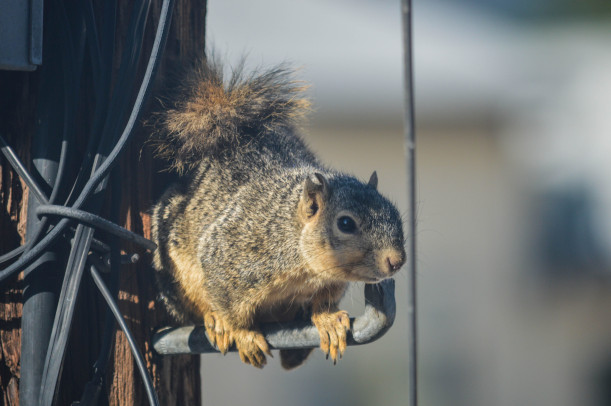We already know squirrels can chew through aluminum. In particular, aluminum fences make a great snack for squirrels. The constant growing of their teeth, hard enamel layer, and need to gnaw on things mean that everyday metal objects around your Canadian home are all fair game for when squirrels get the munchies.
Can squirrels chew through steel wool? The answer is: it depends. Some squirrels’ teeth will be irritated and thick steel wool will be too hard for most squirrels to chew through. However, more persistent or stronger squirrels have chewed through steel wool in the past.
Regardless, it is important to note that using steel wool may cause more problems for you in the long run.
3 Reasons Why You Shouldn’t Use Steel Wool
Steel Wool Rusts
Unlike diamonds, steel won’t look shiny forever. Especially when it’s outside, exposed to rainwater and humidity. Over time, the bright, silvery steel will turn into a rusted, dark colour.
Rusts weaken the strength of steel wool as well. And after it weakens, squirrels will have a much easier time getting through. If you do decide to replace the steel wool, you will have to be careful about removing the rusted steel wool afterwards. On to the next point…
Steel Wool Makes Your House Look Ugly
If you cover holes around your house using steel wool, it certainly won’t be pretty. And I’m not talking about a small, one-week bruise, either— it’s a pain to remove steel wool, so you must be certain if you want to go this route before you start.
And when the wool rusts, unless your house is orange or brown-colour, it definitely won’t look too pleasant. Consider using a different method other than steel wool if you want to keep your house looking pleasant.
Steel Wool Can Be Pushed Away
Even if squirrels may not be able to chew through steel wool, they certainly can still move it. Since steel wool consists of fine strands of steel, squirrels and other creatures will be able to chew and tear apart the strands.
Over time, you may find pieces of steel wool on the yard around your house. In the worst-case scenario, squirrels would have entered your home where the steel wool used to be, leading to possible attic infestation or squirrel nests in your home.
Best Alternatives to Steel Wool
Use Caulk or Foam Sealant
Caulk or a foam sealant can be used as a sealing agent for holes, preventing wildlife from coming inside.
The downside of this method is that if there are other creatures inside your attic, this will prevent them from escaping. There’s already a host of other risks associated with squirrels being trapped in your attic, so you must make sure there aren’t any animals in your attic before you attempt this.
The major downside in using caulk is that yes, squirrels can chew right through caulk. Therefore, it is not advisable to use caulk unless you are only providing a temporary solution, and are fine with the risk of having a squirrel possibly entering your home.
Call a Wildlife Removal Professional
The best method is to call a humane wildlife removal service to help with your needs. They will be able to come to your property, assess any potential problems, and seal all holes for you. Squirrel removal services in Toronto are abundant, and paying for an affordable professional will often save you money and stress in the long-run.
This is the best method because if you attempt to do it yourself, squirrels can invade your home and cause thousands of dollars worth of damage to your roof, attic, wires, and insulation. In order to save yourself a headache, calling a wildlife removal professional is the best option.
